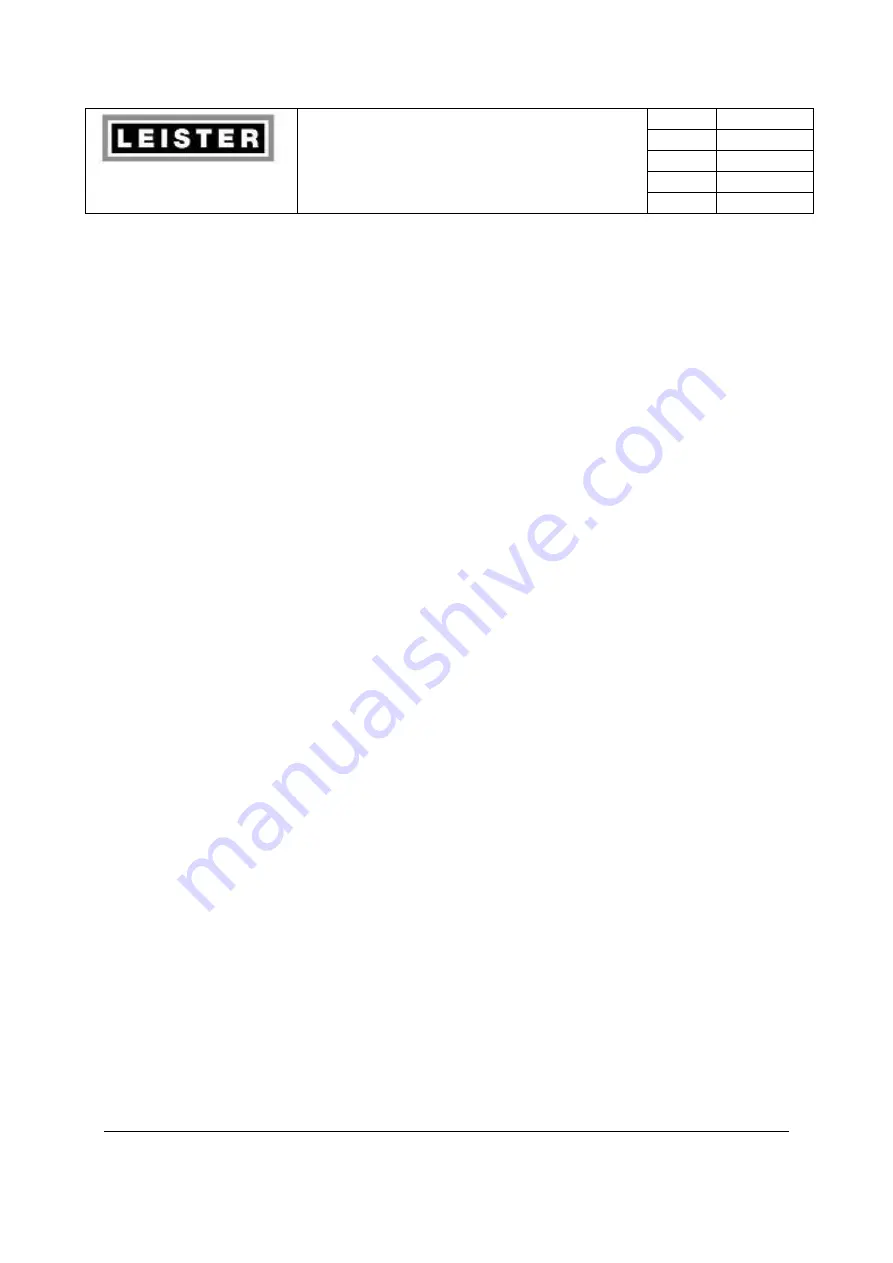
Leister Technologies AG
Operating Manual
Welding Machine SEAMTEK 36
Revision: A
QM
Page
47 / 62
Created
04.04.2014 TEX
Released
Modified
47
8.0 Basic Hot Air Welding
This section includes some practices that will help you produce the best possible seam. Like any
skill, successful rotary hot air welding requires concentration and practice and, like any skill,
there are always new techniques and individual methods to be discovered.
Here are some helpful hints:
8.1 Allow Smooth, Drag-Free Fabric Flow
The best seams are produced when there is no stress or tension on the fabric as it is pulled
through the weld head by the drive wheels. However, this can be difficult to achieve in reality.
First, the pull of the wheels creates some tension. Secondly, you apply, inadvertently, some
additional tension while steering the pattern through the wheels. The larger the product is the
harder this becomes.
There are ways to compensate for this: You can reduce the first type of wheel tension by
reducing fabric friction. Pay close attention to the initial setup. Be sure that the fabric will not
catch or drag on anything. A sloped table can also be used with a slippery surface so that the
fabric slides under its own weight through the weld area. Smooth table surface provides a low-
friction sliding surface for heavier patterns and helps to keep the product clean as it is
fabricated. As you are welding you will get the feeling of what type of material handling you
will need.
8.2 Use a Lower Wheel Speed When Necessary
It seems self-evident that tricky curved patterns should be welded at a slower speed--at least
until you get used to the pattern. It's always easy to speed up later, so slow down the wheels if
you are having trouble steering the pattern.
8.3 Run the Seam Cold
When a new pattern is introduced, or even when some time has passed since you last welded a
particular pattern, it is always a good idea to run through cold a few times to get used to a
pattern.
To do this, place the nozzle mode switch in the OUT position. This prevents the nozzle form
entering the weld area but all other SEAMTEK 36 functions operate normally.






























